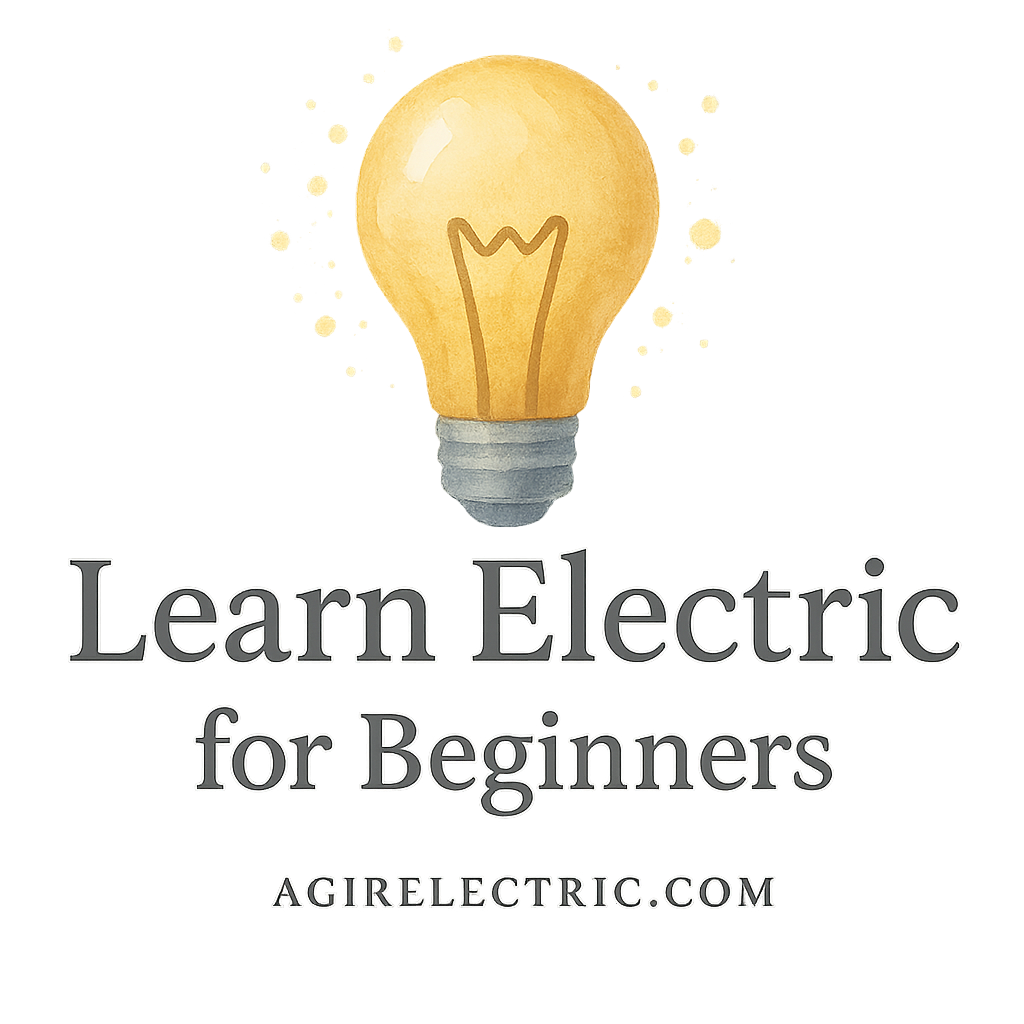Electricity is literally everywhere—from your morning coffee maker to the power lines overhead. But have you ever stopped to wonder: is all electricity the same? Actually, it’s not. There are two primary types of electric current—AC (Alternating Current) and DC (Direct Current)—and while they both get the job done, they work in very different ways.
Let’s break down these differences in a way that’s clear, fun, and (yes!) electrifying.
Introduction
If you’re dabbling in home DIY electrical projects or just brushing up on the electric basics for beginners, understanding the differences between AC and DC current is crucial. These two forms of electricity influence how your devices function, how your home is wired, and even how your car runs.
Ready to spark up some knowledge? Let’s dive in.
What Is Electric Current?
Understanding the Flow of Electrons
In simple terms, electric current is the movement of electrons through a conductor—usually a wire. This movement is what powers all your electronics and appliances. But here’s the twist: how those electrons move defines whether it’s AC or DC.
What Is AC (Alternating Current)?
How AC Current Works
Alternating Current, or AC, changes direction periodically. It goes back and forth—hence “alternating.” In most countries, AC alternates at 50 or 60 times per second, or 50–60 Hz. This is the kind of electricity that comes from your wall outlets.
Real-World Examples of AC Usage
- Household outlets
- Air conditioners
- Washing machines
- Power tools
Because it’s easier to transmit over long distances, AC is used for the power grid.
Curious about the tools used to measure or diagnose AC power? Check out the section on electric tools and equipment.
What Is DC (Direct Current)?
How DC Current Works
Direct Current flows in a single direction—from the power source to the load. It’s more stable and constant, making it ideal for low-voltage applications and devices that need a consistent current.
Real-World Examples of DC Usage
- Batteries (phones, laptops, flashlights)
- Solar panels
- Electric vehicles (EVs)
- Small electronic gadgets
Want to learn how to wire simple DC projects? Here’s a great spot to begin: home electric projects.
1. Flow Direction
This is the core difference between AC and DC.
- AC: Current reverses direction periodically.
- DC: Current flows in only one direction.
Imagine AC like a wave in the ocean—constantly moving forward and back. DC, on the other hand, is like a straight river—always flowing in one direction.
2. Current Source
- AC is generated by alternators in power plants.
- DC is usually produced by batteries, solar cells, and fuel cells.
Want a deeper understanding of how these sources work? Check the basics tag or learn-electric resources.
3. Frequency
- AC has a frequency (typically 50 or 60 Hz).
- DC has zero frequency because it doesn’t alternate.
If you’re using a multimeter, you can easily distinguish between the two. Need help using one? This multimeter tag is a goldmine of info.

4. Transmission and Distribution
AC wins big here. It’s easier to:
- Step up or step down voltage using transformers.
- Transmit over long distances with minimal loss.
That’s why the power company sends electricity to your home in AC form.
5. Energy Efficiency
- DC is more efficient for short-range uses (like inside your gadgets).
- AC is more efficient for long-range transmission.
Ever wondered why your phone charger converts AC to DC? It’s because your phone can only “digest” DC power.
6. Safety Considerations
- DC current may seem safer, but it’s actually more dangerous at high voltages because it doesn’t let go (it holds onto your body if you touch it).
- AC current can be let go if you get shocked, especially at lower voltages.
For a more in-depth guide on staying safe, don’t miss: electric safety precautions and explore our safety tag.
7. Applications and Devices
AC-Powered Devices
- Refrigerators
- TVs
- Lamps
- Heaters
DC-Powered Devices
- Smartphones
- Electric vehicles
- Drones
- USB-powered accessories
Thinking about upgrading your home with DIY installations? Explore more DIY-tagged projects and home improvement ideas.
8. Conversion and Compatibility
- Converters are used to switch between AC and DC.
- Rectifiers: AC ➡️ DC (used in chargers)
- Inverters: DC ➡️ AC (used in solar power systems)
Compatibility is key when designing or troubleshooting systems. Learn more from our troubleshooting electric issues guide or explore the troubleshooting tag.
AC vs DC: Quick Comparison Table
| Feature | AC (Alternating Current) | DC (Direct Current) |
|---|---|---|
| Flow Direction | Changes direction | One direction |
| Source | Power plants, alternators | Batteries, solar cells |
| Frequency | 50/60 Hz | 0 Hz |
| Transmission | Long distances | Short distances |
| Safety | Safer at high voltages | Dangerous at high voltages |
| Devices | Household appliances | Electronics, EVs |
| Efficiency | Efficient in grids | Efficient in devices |
| Conversion | Needs rectifier | Needs inverter |
Why Understanding This Difference Matters
So, why should you care? Well, knowing the difference between AC and DC:
- Helps you choose the right tools for your projects
- Keeps you safe while working with electricity
- Makes it easier to diagnose problems
- Can help reduce mistakes when learning wiring basics
Learn from the common mistakes beginners make to stay one step ahead.
Safety First: A Word on Electrical Safety
Whether you’re rewiring a lamp or installing solar panels, safety should never take a back seat. Here are some quick reminders:
- Always shut off power before touching wires
- Use insulated tools
- Don’t ignore warning signs like sparks or smells
- Refer to safety checklists
Want to diagnose electrical issues like a pro? You’ll love these troubleshooting tips.
Final Thoughts
Electricity powers our modern lives, but not all current is created equal. While AC is king for transmission, DC rules in electronics and battery tech. By understanding their differences, you’ll not only become smarter with your energy choices but also safer and more efficient in your DIY projects.
Ready to go deeper into electrical topics? Explore everything from measurement to wiring on AGIR Electric—your home for electric knowledge.
FAQs
1. Which is more dangerous: AC or DC?
Both can be dangerous, but DC tends to hold onto your body longer during shock, making it more hazardous at high voltages.
2. Why is AC used in homes?
Because it’s easier to transmit over long distances and can be stepped up/down with transformers.
3. Can I use DC appliances in an AC outlet?
Not directly. You’ll need a converter or rectifier to make it work safely.
4. Do solar panels produce AC or DC?
Solar panels produce DC electricity, which is then converted to AC using an inverter for home use.
5. Can a multimeter measure both AC and DC?
Absolutely! Just make sure to switch the setting depending on what you’re testing. Check our multimeter guide.
6. What happens if you use the wrong current type in a device?
It can damage the device or even cause electric fires. Always check specifications.
7. Where can I learn more about home electrical work?
Start with these excellent resources on DIY electrical projects, fixes, and the beginner tag.


